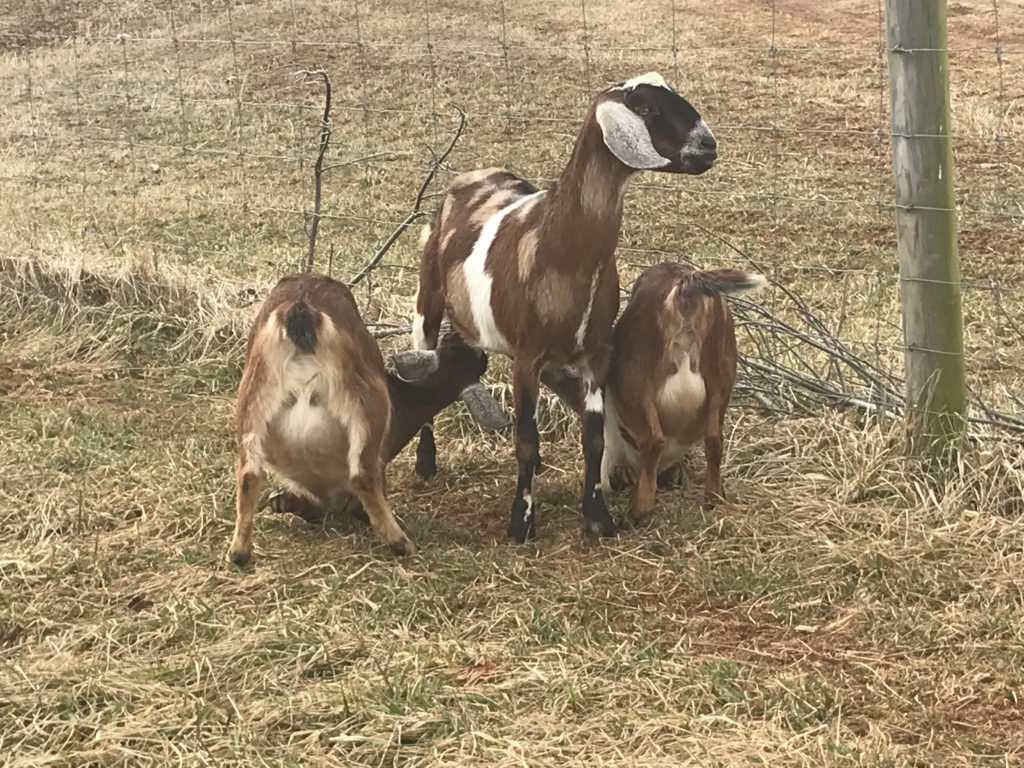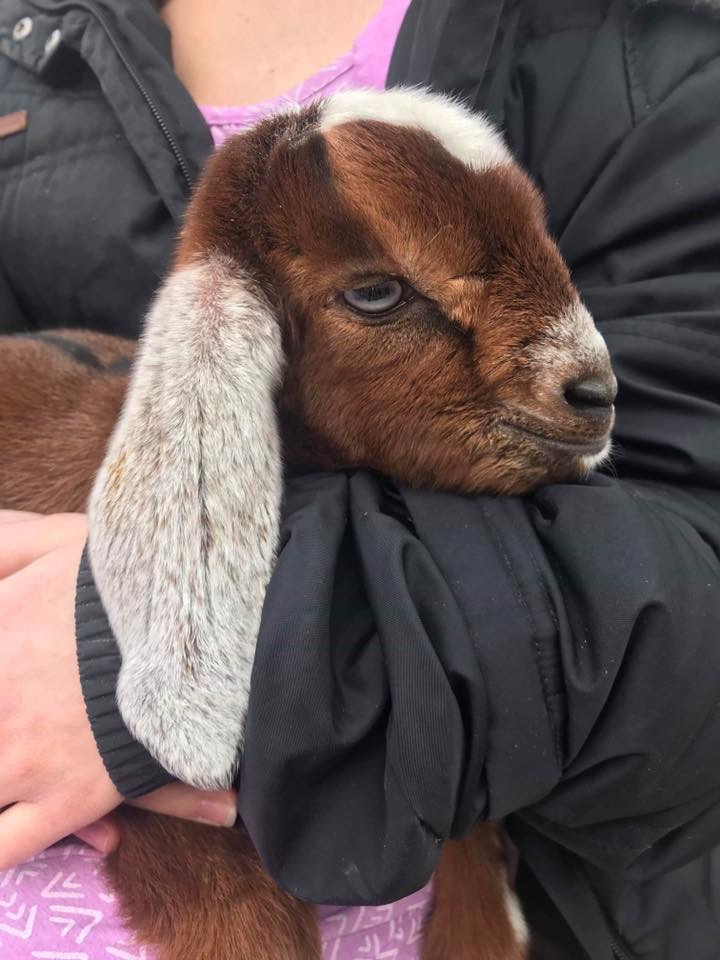In 2019, we gathered our first herd of Mini Nubian goats! We had two criteria for choosing our foundation stock: outstanding milking genetics and great breed character. Mini Nubians are a relatively new breed combining the strengths of Nigerian Dwarf goats (very small; rich milk in good quantity) with Nubians (larger breed; rich milk in copious quantity). Like both Nigerian Dwarves and Nubians, Mini Nubian milk is rich in butterfat, so it is among the best of goats’ milk for making cheese, yogurt, and other dairy products. Many with allergies to the protein in cow’s milk can enjoy goat milk products! Also popular is the production of soaps and lotions using Mini Nubian milk.

The Nigerian Dwarf goat standard states that “does stand no more than 22.5” and the bucks no more than 23.5” at the withers.” Full sized Nubians have a minimum shoulder height of 30” for does and 35” for bucks (and they can get taller, with many weighing over 200 pounds.)
The breed standard for Mini Nubians states that, for purebred animals, “the maximum height is 29 inches for does and 31 inches for bucks, measured at the withers. The minimum height is height minimum of 21 inches for does and 23 inches for bucks.” Most breeders of Mini Nubians aim for the midrange here, measuring 23”-26” inches for does, and around or just under 100 pounds.
Mini Nubian goats have attracted many because they eat less than their larger Nubian cousins, but produce plentiful milk that is often easier for the milker to obtain than from Nigerian Dwarf does because teats are larger and the animal is taller. Mini Nubians have the reputation of being easy to manage (especially for children, smaller adult, or elderly goatherds) and are hardy, friendly, and good tempered. They need less barn space, and are all-around more economical than are Nubians.
That said, Mini Nubians should look like mini-NUBIANS: that is, they should look as much like their larger cousins as possible. They should especially display the Roman nose and pendulous, bell-shaped ears of the full sized Nubians, and the entire animal should be in good proportions, not, for instance, with Pygmy legs but a Nubian-sized head or body. Thus: the main difference between these two is their overall height and weight.

As relatively new Mini Nubian breeders, our goal here at Storybook Farm has been to obtain the highest quality foundation goats that we can and then, going forward, to work to equal or improve the milk quality, conformation, and aesthetics of our goats.
Primarily, we are interested in breeding goats that produce the highest volume, butterfat, and overall quality of milk. We are more interested in serving the utilitarian needs of homesteaders and family farms than in producing show winners. That said, it is by working towards the standards set by show judges that one improves the overall conformation that leads to better milk production in one’s herd.
While our focus on breeding for milk production (and therefore udder conformation) will always be primary, we also love the multi-colored nature of Mini Nubians. Our herd has brown eyes and blue eyes, horned (but disbudded) and polled, small and tall, moonspotted and solid colored goats. We love them all!
In 2020, we launched a herdsharing program whereby we serve our local community with fresh raw goat milk. Our herd is yearly tested for CAE, Johannes, Brucellosis, and TB yearly. (The latter two are mandated by state law because of our herdsharing program, even though WV is a TB-free state. Ah, bureaucracy!) We have done baseline testing for CL, and will test any abscesses that arise. (See all of our results here.)
Another demographic that we are interested in serving is the youths who are involved in agricultural programs, or who want to learn to keep small livestock at home on small acerage. Because Mini Nubians are small, manageable and economical, they are a great choice for parents who are looking for children’s pets and 4-H projects, or for homesteaders on smaller parcels.
Click on the links below to view specifics about each of our goats.